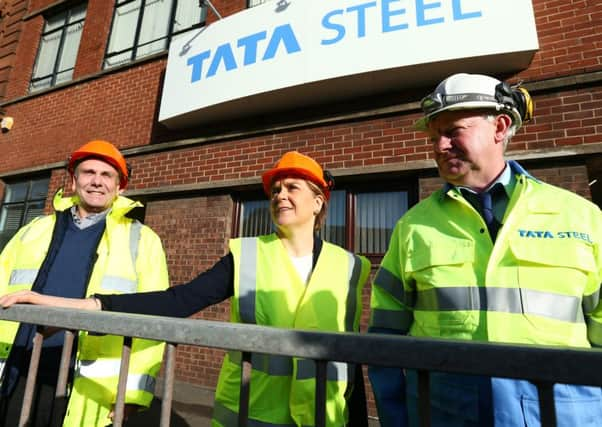Leaders: £70m for manufacturing is a much needed fillip


Growth is vital to the prospects of a strong economy. But at present, there is little evidence of that kind of progress in Scotland’s manufacturing industries. In fact, last year we had economic growth overall while manufacturing fell. Without the services industry, we would be in trouble if current trends were allowed to continue. We have witnessed closures and threats of closures, and in the current economic climate, we may see more before there is an upturn.
Texas Instruments in Greenock, Polaroid Eyewear in West Dunbartonshire and Hawick Knitwear have all announced closures.
Advertisement
Hide AdAdvertisement
Hide AdAnd the future of around 270 workers at the Tata steel plants in Cambuslang and Motherwell still hang in the balance after its owner announced plans to sell up.
It is against this grim backdrop that the Scottish Government has launched a £70 million bid to boost the manufacturing sector, which supports some 190,000 people.
Its new strategy, A Manufacturing Future For Scotland, is aimed at encouraging industry and educational institutions to work more closely together in future.
The plan is aimed at stimulating innovation, improving productivity and increasing investment in the manufacturing sector. The Scottish Government’s intervention is certainly to be welcomed.
Unchecked, the continuation of the down trend in the manufacturing industry would undermine whatever success is being achieved in services. And as we all know, we can’t build a healthy economy by relying on one sector of the economy. Diversity is essential. Just look at the effect in and around Aberdeen, as the oil price plummets.
This is not about propping up dying industries, and throwing good money after bad – it is about strengthening the prospects of businesses which may be at a competitive disadvantage internationally, and helping them to innovate and diversify. These important strategic objectives are difficult to achieve in straitened times, even if the will exists.
There is wide agreement that global market competitiveness – or lack of competitiveness – is critical to our manufacturing industries.
The First Minister is to be applauded for taking this action to support Scottish industries, just as the Scottish Government has already taken action this year to support the north-east as it loses thousands of jobs in the oil industry.
Advertisement
Hide AdAdvertisement
Hide AdThe Community union has warned that yesterday’s announcement should be part of a wider industrial strategy, rather than a one-off reaction.
While that is true, there is evidence of long-term strategy within the initiative, as industry is linked with education, which again is to be welcomed in principle.
Miracles should not be expected for £70 million, and of course, there is no guarantee that the measures announced yesterday will all work, but vulnerable manufacturing industries should now stand a greater chance of turning a profit than they did before this announcement.
End of an era at Hogmanay
There is no escaping the feeling that the end of an era in Scotland has been signalled with the announcement from Pete Irvine that he is stepping down as director of Edinburgh’s Hogmanay.
An ever-present since the first party in 1993, he has long since transformed the entire image of Scotland’s new year celebrations.
In an age of security barriers, stewards and multiple stages on and around Princes Street, it is hard to recall how unruly the unregulated crowds on the Royal Mile were. It is also difficult to imagine Edinburgh without its six-week Christmas and Hogmanay festival, which are now said to be worth an incredible £242 million for the economy.
More than two decades have passed since Edinburgh launched its Hogmanay festival on the back of hosting a European Summit in 1992. Within a few years, the city’s events were placed firmly on the global map and were attracting tens of thousands of overseas visitors to Edinburgh at a time of year when the city’s tourism industry virtually closed down.
Perhaps Mr Irvine’s biggest achievement has been to ensure Edinburgh’s Hogmanay has retained that global profile in the face of intense competition. Part of that is down to a constant drive to improve and innovate, as well as insist that the city must host a proper festival, not just a one-off fireworks display.
Advertisement
Hide AdAdvertisement
Hide AdBut Mr Irvine has also been careful to ensure that he has never become bigger than the event itself. Few visitors will know who he is.
While we are sorry to see him go, he has put in place a winning formula, which it would be wrong to tamper with too much. His legacy now needs to be nurtured and taken forward to ensure that the eyes of the world remain focussed on Scotland at New Year.